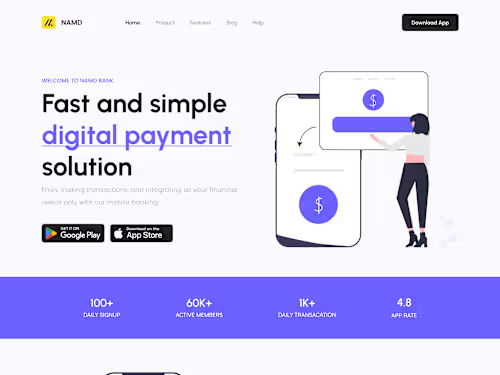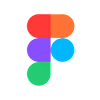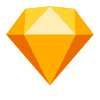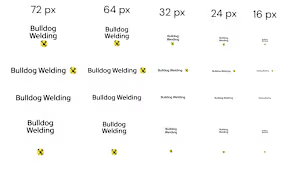
Custom Website Design Tailored to Your Brand & Needs 🚀✨
Contact for pricing
About this service
Summary
What's included
Problem Space
The problem space identifies user issues, like hard-to-find info or slow load times. I’ll design a user-friendly site that solves these problems and supports your business goals.
HMW (How Might We) Question
A "How Might We" (HMW) question frames a problem by asking how to solve it best. For example, "How might we help users find what they need easily?" It guides us to create effective solutions for improving your website.
Primary Research
Primary research gathers direct feedback from users through surveys, interviews, or observing their behavior. It helps us understand their needs and challenges to design a website that meets their expectations.
Assumptions
Assumptions are beliefs about your users or business without complete data. For example, assuming users need quick access to information. These guide our design, but we test and validate them to ensure we’re addressing real user needs.
Proto Persona
A proto persona is an early user profile based on initial research and assumptions about their goals and challenges. It helps us design with a clear focus on your audience before gathering detailed user data.
Secondary market research
Secondary market research reviews existing data, like industry reports and competitor websites, to understand your audience and the market. This helps us identify opportunities and make informed design decisions without needing new data.
Interviews, surveys, or other method of user testing
Interviews, surveys, and user testing gather feedback directly from your website users. This helps us understand their needs and challenges, guiding us to make design decisions that ensure your site is user-friendly and meets your audience’s needs.
Affinity map
An affinity map organizes user feedback into themes or patterns. It helps us identify common issues or opportunities, guiding design decisions that address your users' needs and concerns.
Persona
A persona is a detailed profile of a typical user, based on research. It includes their goals, challenges, and behaviors. Understanding these helps us design a website that directly addresses user needs, creating a more personalized experience.
User Journey Map
A user journey map shows the steps a typical user takes on your website, highlighting their experience, emotions, and challenges. It helps us identify pain points and opportunities to improve the user experience, ensuring a smoother, more engaging journey.
UI Board Inspiration
A UI board inspiration is a collection of design ideas, colors, fonts, and images that set the visual direction for your website. It ensures the design aligns with your brand and creates the right user experience.
Lo-Fi Wireframes
Lo-Fi wireframes are simple sketches of your website’s layout, focusing on structure and placement of key elements like buttons and menus. They allow us to quickly test ideas and ensure the website's flow works before moving to detailed design.
Mid-Fi Wireframes
Mid-Fi wireframes are more detailed than Lo-Fi, showing clearer content and design elements without final images or colors. They give a better sense of how the website will look and function, helping us refine the user experience before moving to full design.
Site Map
A site map is a visual outline of your website’s structure, showing all pages and how they’re linked. It helps plan navigation, ensuring users can easily find what they need and making the website intuitive and user-friendly.
Moodboard
A moodboard is a collection of images, colors, fonts, and design styles that define your website’s look and feel. It helps set the visual direction, ensuring the design aligns with your brand and the user experience you want to create.
Brand Development (Logo and Typeface)
Brand development for logo and typeface involves creating visual elements that represent your brand. The logo is a symbol that identifies your brand, while the typeface sets the style of fonts used on your website and materials. Together, they help establish a recognizable and consistent brand identity.
Hi-Fi Prototype
A Hi-Fi prototype is a fully designed, interactive version of your website that closely resembles the final product. It includes all details—colors, images, fonts, and buttons—so you can experience how the site will look and function. This helps test the user experience and make final adjustments before development begins.
UI Library
A UI library is a collection of design elements like buttons, icons, colors, and fonts used consistently across your website. It ensures a cohesive, seamless look and makes it easier to maintain and update the site in the future, creating a unified design throughout.
Example projects
Skills and tools
Frontend Engineer
UX Designer
Web Developer

Adobe XD

Elementor

Figma

Sketch

Webflow
More services

